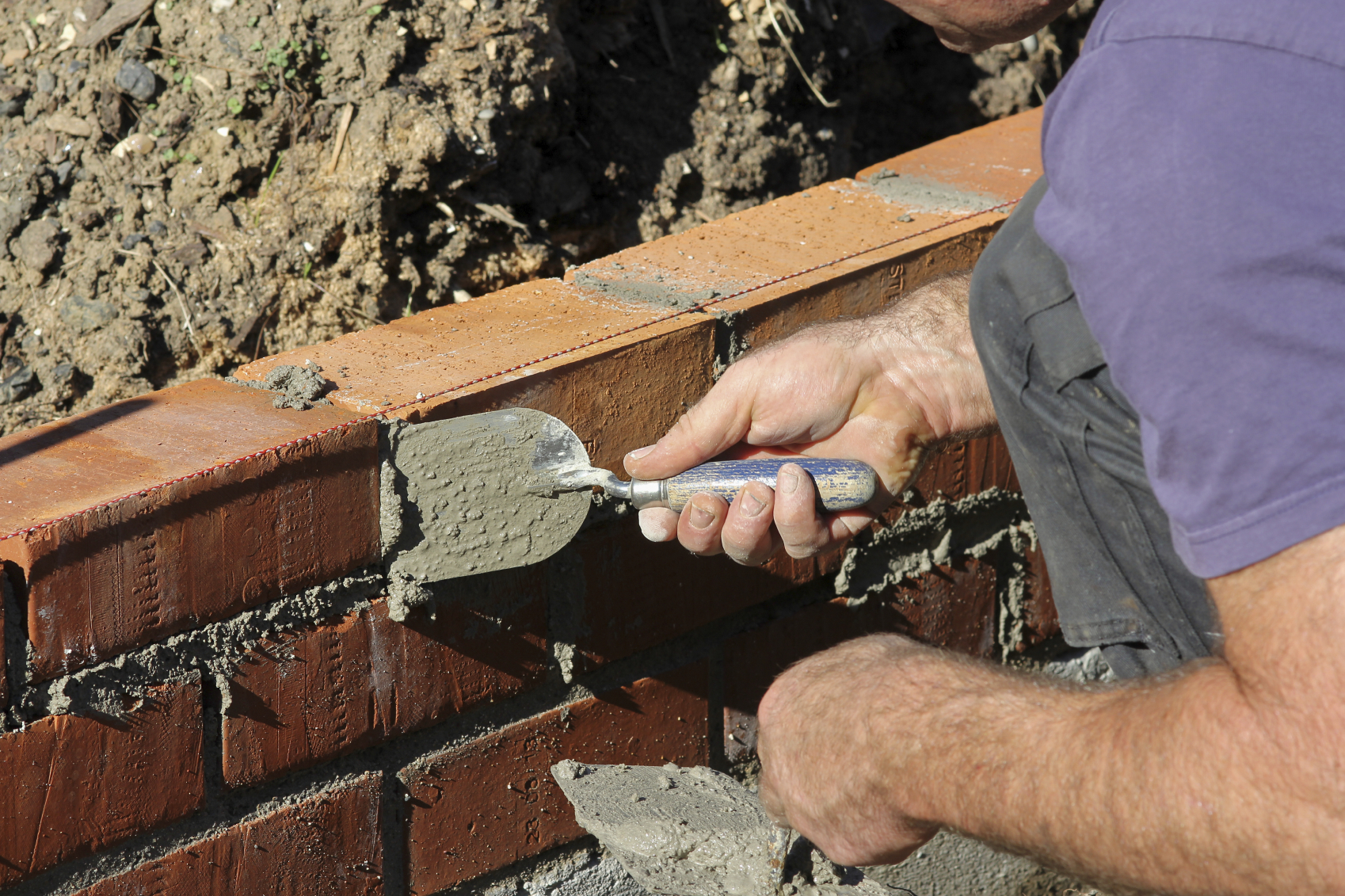The Only Guide to Bricklayer Auckland
Wiki Article
The Best Guide To Bricklayer Auckland
Table of ContentsFacts About Bricklayer Auckland RevealedWhat Does Bricklayer Auckland Do?Some Ideas on Bricklayer Auckland You Need To Know8 Simple Techniques For Bricklayer Auckland
The difference between absolutely no as well as timeless masonry remains in the laying of the block. The brick is no more pressed vertically, yet slanted. No has an unique opening on the upper side of the block. Therefore the mortar bed is reduced. It will certainly sink also much deeper when the following program of blocks is laid.In addition, we also paid attention to an excellent proportion between the size and also width of the brick so that it is excellent for functioning with a stretcher bond. Bricklayers are a crucial profession in the construction industry, liable for laying bricks, pre-cut stone and also concrete blocks in mortar. Bricklayers construct, prolong as well as repair residential as well as commercial structures, as well as other structures such as structures, walls, smokeshafts or attractive masonry.
Your time as a bricklaying pupil will usually be split in between your employer and also training carrier (such as an university), with a minimum of 20% of your regular working hrs invested in training. Your training might take place every week, every month or in a different block of time, as well as it can occur at your workplace, at your training provider or online.
Things about Bricklayer Auckland
When investigating construction, you invariably find that any kind of brand-new or cutting-edge idea has really been tried over and also over again, frequently extending back years. One of these new-but-actually-old concepts is the suggestion of a mechanical bricklayer, an equipment to automate the building of masonry wall surfaces. It's easy to see the allure of this idea - stonework building and construction seems practically completely suited for automation.It does not appear like it would need physically complicated activities - each brick gets a layer of mortar used, and is just stocked area alongside the previous one. As well as due to the fact that each traditional joint coincides dimension, positioning is almost deterministic - each brick coincides set range from the previous one.
These devices could not notice anything concerning their atmosphere, or procedure where a block required to go - they simply extruded a layer of mortar and mechanically positioned a block at routine intervals (Bricklayer Auckland). It's vague the number of of these machines ever made it beyond the attracting board, but a minimum of among these (John Knight's) was used to build a brick wall that supposedly still stands today.
Over the years, stonework has decreased in importance as a building and construction technology in the established globe, and with it the passion in automating it. Unlike with concrete 3D printing, where there are lots of efforts to establish the modern technology, I can only locate a handful of current efforts to automate stonework. Bricklayer Auckland.
Getting My Bricklayer Auckland To Work
It's qualified of putting blocks in tight corridors or complex corners, as well as Hadrian can create all the wall surfaces of a small structure with just a few steps of the lorry. Hadrian can presently establish about 200 blocks an hour, but they're aiming to be able to do 1000 blocks an hour or more (the blocks it sets are different from the block masonry utilized in the US, however in United States masons can establish someplace in the area of 400 obstructs a day).
SAM has a collection of sensors to make up for the movement of the platform and also guarantee it's positioning bricks degree, and can collaborate with blocks of all various sizes (though it won't build CMU obstruct wall surfaces). It gets installed to a movable scaffolding that's increased progressively as the wall is finished.
The marketing material on Building and construction Robotics' site suggests that it's no more their Recommended Site main emphasis - even more emphasis is offered to their other item, MULE.Other than SAM and Hadrian, there are a couple of various other mechanical bricklayers in different phases of development. Craftsmac, a business out of India, simply recently introduced a robotic mason utilized for building CMU walls - it shows up somewhat similar to SAM, a rolled chassis with a robot arm, conveyor, and investigate this site also mortar mixer mounted to it.

Some Known Details About Bricklayer Auckland
A somewhat different group of equipments focused on enhancing masonry performance is what I'll call "stonework assistants". These are machines made to help with physically raising the block (they seem to be more usual with block than brick) and taking the pressure off the mason, while still enabling the mason to manipulate it right into setting, Masonry aides date from Discover More a minimum of 1994, when the army try out MAMA, the Mechatronically Assisted Mason's Help.
Report this wiki page